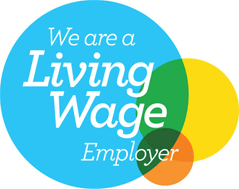Care Funding – What Does The Future Hold?
N.B: Following an announcement made by the Government in July 2015, the main Paying for Care provisions to introduce the £72,000 capital cap, which were due to take effect in April 2016, have been postponed until April 2020.
Two years ago, to considerable fanfare, the Dilnot commission published its report proposing that care costs in England should be capped at £35,000. There was some concern that the current government would seek to reject that figure, given its restrictions on spending, but we have been kept waiting until now for the latest take on those recommendations.
Those with large amounts of equity in their properties have watched as their care needs have eroded their children’s inheritance. Dilnot was therefore heralded as the face of common sense and the friend of savers and property owners and their families. However now that the outcome has been published, we see that the government has taken a rather different approach to that anticipated given the enquiry’s recommendations.
Ministers are planning to dispense with today’s postcode lottery of care, which affects the 432,000 people in residential care settings and many more people who need care at home. At present, elderly and incapacitated people in different parts of the country are awarded differing levels of financial help from the public purse. From 2016 forward, this system will be replaced by a national level of eligibility and the opening of a government-backed “care account” for individuals. This “care account” is effectively an insurance scheme with a social outcome. Elderly people will pay a sum that’s means-tested and dependent on whether they are looked after at home or in a care home. This sum will cover their care costs but not the accommodation or living costs, and will be capped at £72,000. The accommodation costs – still to be means tested – are likely to be set at about £12,000 per year.
At present, people only qualify for Social Services funding when their capital drops to below £23,250. The Government now plan to help home owners who have less than £118,000 (including the value of their home, if it is assessable.) Where the family home is not assessable – for example, because a partner still lives there – the Government will help if the person has less than £27,000 capital. Those who will feel the difference are those “self-funders” who need care but have until now been deemed too wealthy to qualify for Social Services funding. The estimate of numbers falling into this group is 175,000. At present these self-funders can pay approximately £40,000 per year for residential or nursing care and accommodation costs. The Government also proposes to allow self-funding individuals to “buy residential care” at the same cost provided by Social Services – on average £500 per week, although it remains to be seen how the care home industry will respond to this.
At present 40,000 people per year have to sell their homes to pay for care but a relaunched deferred payments scheme due to start in April 2015 is aimed at giving people more choice about whether or when to sell. It seems to be a little-known fact that this scheme is already running in various local authorities in England and about 8,500 people have borrowed about £200m with no interest charged in their lifetime. Disappointingly, under the new universal deferred payment scheme, interest will be charged from the outset of the loan, apparently at a nominal rather than a commercial rate.
The government is also pushing the financial services industry to develop an innovative range of pension and insurance products to help people meet the cost of care. In addition they are looking into future insurance products that could work in the usual way: a policy could be taken out well before there is a risk of care and will therefore be at a lowish premium. The reward is a pay out covering the cost up to the cap once it is required.
The dichotomy for local authorities is that, subject to the introduction of any new financial products, they will need to fund the shortfall at a time of increasing financial pressure on funding at local government level. There will inevitably be challenges to their assessment process as people seek justification for funding decisions that they make. Last year the Local Government Association predicted that the rising cost of adult social care could take up almost all of council spending by 2020.
This is not yet set in stone. Following the unveiling of the proposals comes a three-month consultation period. Only after that will we be presented with the final package.




